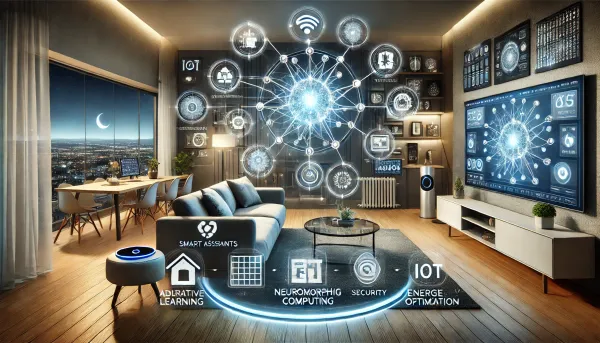Securing Your Connected Sanctuary: Navigating Privacy and Cyber Threats in Your Smart Home

Welcome to the age of the smart home, where convenience and automation enhance our daily lives through a network of interconnected devices. From smart thermostats that learn your preferences to security systems you can control from anywhere, the Internet of Things (IoT) promises a more comfortable, efficient, and secure living environment. However, as we weave more technology into the fabric of our homes, we also introduce a complex web of privacy vulnerabilities and cybersecurity risks that homeowners must understand and address proactively.
This article delves into the realities of smart home security and privacy, drawing insights from our podcast, "Smart City Under Siege: Navigating Privacy and Cyber Threats", to help you build a truly intelligent and secure connected sanctuary.
The Allure of the Intelligent Home: Benefits and Interconnectivity
The smart home revolution offers a plethora of benefits, making our lives easier and more interconnected than ever before:
- Enhanced Convenience and Automation: Smart devices automate routine tasks, such as adjusting lights, controlling temperature, and even managing appliances. Imagine your lights dimming automatically as you settle in for the evening, or your coffee maker starting brewing just before you wake up.
- Improved Energy Efficiency: Smart thermostats and lighting systems can learn your habits and optimize energy consumption, leading to lower utility bills and a reduced environmental footprint. Some smart city initiatives even leverage AI to reduce energy consumption, a principle that applies to individual homes as well.
- Increased Security and Peace of Mind: Smart security systems with connected cameras, door locks, and motion sensors allow you to monitor your home remotely, receive alerts for unusual activity, and even control access for visitors.
- Enhanced Accessibility: Smart home technologies can significantly improve accessibility for individuals with disabilities or the elderly, enabling them to control their environment more easily through voice commands or personalized settings. Projects aimed at enabling senior populations to self-manage their health in smart living environments highlight this potential.
- Personalized Experiences: Smart devices can learn your preferences over time, creating more personalized and responsive living experiences.
This interconnectedness, however, where numerous devices communicate with each other and the internet, forms the very foundation of both the smart home's advantages and its inherent risks.
Peering Behind the Curtain: Privacy Vulnerabilities in Smart Homes
The proliferation of sensors and data collection in smart homes raises significant privacy concerns, mirroring the challenges discussed in our podcast regarding smart cities [Our conversation history].
- Extensive Data Collection and Monitoring: Smart home devices constantly collect data about your activities, habits, and even conversations. Smart speakers record voice commands, smart cameras monitor your living spaces, and even smart appliances can gather data on your usage patterns. Intruders may even monitor device use to determine when users are away. This creates a detailed digital footprint of your private life within your own home.
- Potential for Unintended Data Sharing: Data collected by your smart devices may be stored in the cloud and potentially shared with third-party service providers. Understanding the privacy policies of each device and service is crucial, as your data could be used in ways you haven't explicitly consented to.
- Lack of Transparency and User Control: Many users are unaware of the extent of data being collected by their smart devices and have limited control over how this data is used. This lack of transparency can erode trust and lead to feelings of vulnerability.
- Smartphones as Valuable Databases: Many customers control their smart homes via smartphone, making it a valuable database for hackers. If your phone is compromised, attackers could potentially gain control over your entire smart home ecosystem.
- Inadequate Information Security: The comparatively inadequate information security of smart home system (SHS) devices may jeopardize consumers’ privacy.
Unlocking the Digital Door: Cybersecurity Risks in Your Smart Home
The interconnected nature of smart homes also presents numerous cybersecurity risks, a core focus of our "Smart City Under Siege" podcast [Our conversation history].
- Vulnerable IoT Devices as Entry Points: Many smart home devices are designed with convenience in mind and often lack robust security features [Our conversation history]. These devices can become easy entry points for attackers to gain access to your home network. The capacity to impose security on such machines depends on how well the authentication procedures are carried out.
- Compromised Home Network Security: Intruders may access any data stored on an insecure home network. A flaw in even one insecure IoT device could expose your entire home network, including computers, smartphones, and other sensitive devices.
- Risk to Personal Information: If the main internet account controls the home network, any flaw could expose email, social media, and bank account information.
- Potential for Remote Control and Manipulation: Once an attacker gains access to your smart home network, they could potentially control connected devices, such as unlocking doors, disabling security systems, or even manipulating smart appliances.
- Botnet Recruitment: Insecure smart devices can be recruited into botnets, which can be used to launch large-scale cyberattacks without your knowledge.
- Physical Threats via Digital Access: Compromised smart locks or garage door openers could lead to physical intrusions.
Fortifying Your Fortress: Building a Secure and Privacy-Respecting Smart Home
Securing your smart home and protecting your privacy requires a multi-layered approach. Here are some crucial steps you can take:
- Prioritize Security by Design: When purchasing smart home devices, choose reputable brands with a strong track record of security and privacy. Look for devices that offer features like strong encryption and regular security updates.
- Secure Your Home Wi-Fi Network: Use a strong, unique password for your Wi-Fi network and enable WPA3 encryption if your router supports it. Keep your router's firmware updated.
- Change Default Passwords: Immediately change the default passwords on all your smart devices. Use strong, unique passwords for each device and service.
- Enable Multi-Factor Authentication (MFA): Whenever possible, enable MFA for your smart home accounts and connected services. This adds an extra layer of security by requiring a second form of verification in addition to your password.
- Keep Software and Firmware Updated: Regularly update the software and firmware on all your smart devices. These updates often include crucial security patches.
- Segment Your Network (If Possible): Consider creating a separate guest network for your IoT devices. This can help isolate them from your more sensitive devices, like computers and smartphones.
- Review Privacy Policies: Carefully read the privacy policies of each smart device and service you use to understand what data is being collected and how it is being used.
- Disable Unnecessary Features: Turn off any features on your smart devices that you don't need or use, especially those that involve data collection.
- Use Strong and Unique Passwords for Each Device: Avoid using the same password across multiple devices and services.
- Be Cautious About Permissions: Review the permissions you grant to smart home apps and services. Only grant necessary permissions.
- Regularly Monitor Your Network Activity: Keep an eye on your router's logs for any suspicious activity.
- Consider Physical Security: Don't overlook the physical security of your smart devices, especially those that could provide access to your home.
- Educate Yourself and Your Family: Make sure everyone in your household understands the importance of smart home security and privacy practices.
Conclusion: Embracing Intelligence Responsibly
The smart home offers incredible potential to enhance our lives, but it's crucial to embrace this technology responsibly. By understanding the privacy and cybersecurity risks involved and taking proactive steps to secure our connected environments, we can enjoy the benefits of a smart home while safeguarding our digital lives and physical security. Just as our podcast "Smart City Under Siege" explores the complexities of interconnected urban environments, we encourage you to be vigilant and informed in building your own secure smart sanctuary.





